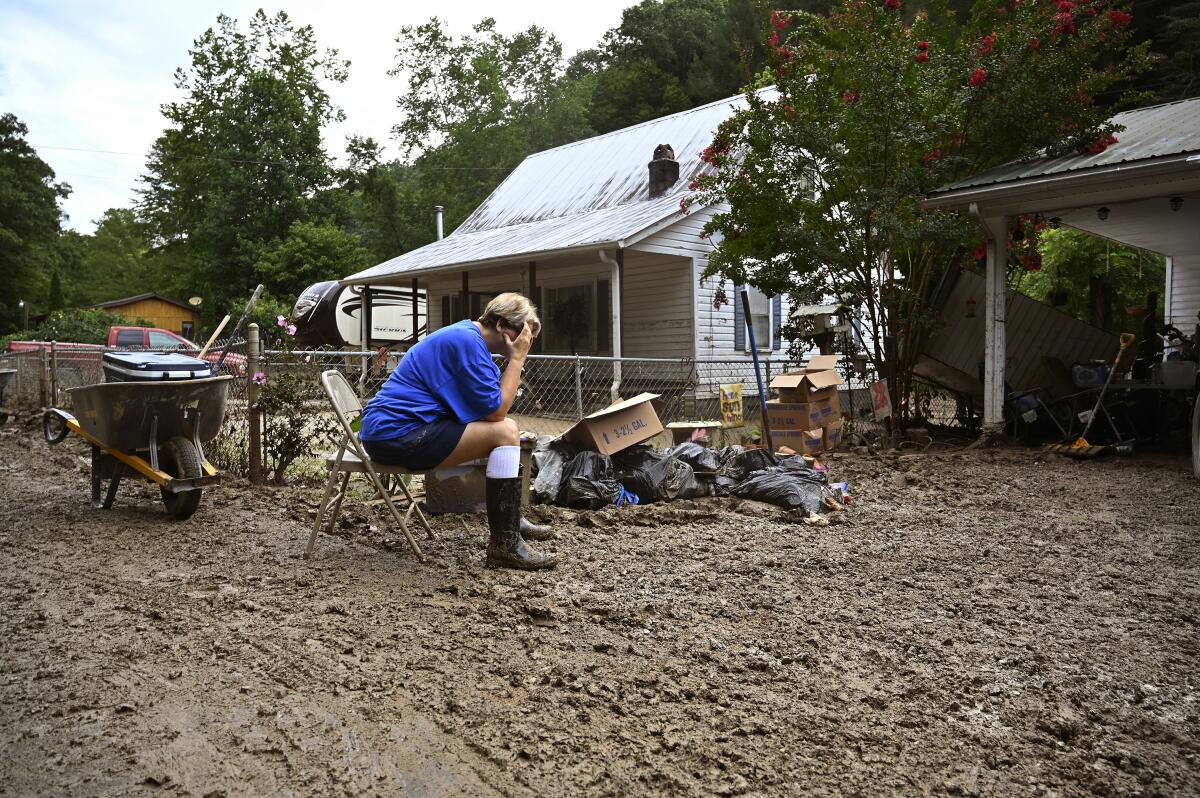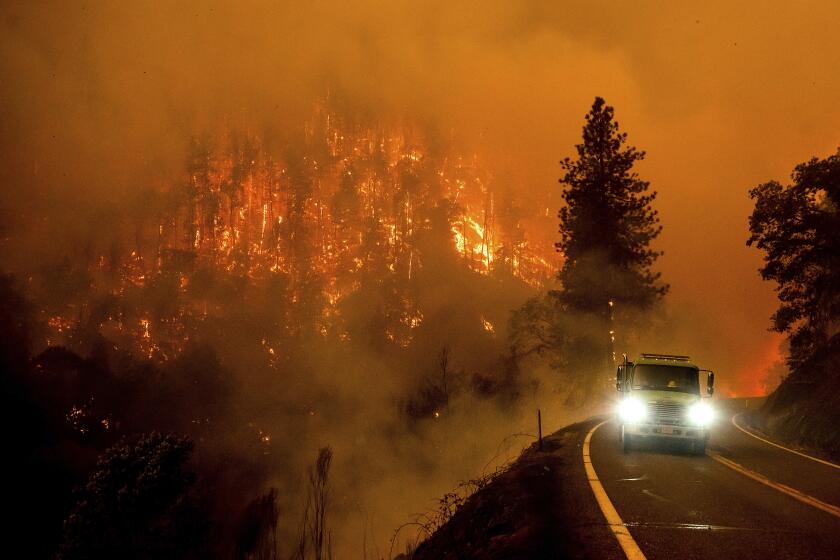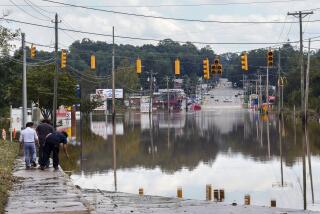Death toll from Kentucky flooding rises to 25, governor says

- Share via
PRESTONBURG, Ky. — At least 25 people, including four children, died when torrential rains swamped towns across Appalachia, Kentucky’s governor said Saturday.
“We continue to pray for the families that have suffered an unfathomable loss,” Gov. Andy Beshear said. “Some having lost almost everyone in their household.”
Beshear said the death toll would likely rise significantly, and it could take weeks to find all the victims of the flash flooding.
Rescue crews continue to struggle to reach hard-hit areas, some of them among the poorest places in America.
“I’m worried that we’re going to be finding bodies for weeks to come,” Beshear said during a midday briefing. He said there is still an active search-and-rescue operation, with a goal of getting as many people as possible to safety. Crews have made more than 1,200 rescues from helicopters and boats, the governor said.
Beshear, who flew over parts of the flood-stricken region on Friday, described it as “just total devastation, the likes of which we have never seen.”
“We are committed to a full rebuilding effort to get these folks back on their feet,” Beshear said. “But for now, we’re just praying that we don’t lose anybody else.”
The McKinney fire explodes to more than 51,000 acres
The rain eased early Friday after parts of eastern Kentucky received between 8 and 10½ inches over 48 hours. But some waterways were not expected to crest until Saturday.
In the tiny community of Garrett on Saturday, couches, tables and pillows soaked by flooding were stacked in yards along the foothills of the mountainous region as people worked to clear out debris and shovel mud from driveways and roads.
In nearby Wayland, Phillip Michael Caudill was working to clean up debris and salvage what he could from his home. The waters had receded from the house but left behind a mess, along with questions about what he and his family will do next.
“We’re just hoping we can get some help,” said Caudill, who for now is staying with his wife and three children in a free room at Jenny Wiley State Park.
Caudill, a firefighter in the Garrett community, went out on rescues around 1 a.m. Thursday but two hours later had to leave for home, where waters were rapidly rising.
“That’s what made it so tough for me. Here I am, sitting there, watching my house become immersed in water, and you got people begging for help. And I couldn’t help,” he said, because he was tending to his own family.
The water was up to his knees when he arrived home, and he had to wade across the yard and carry two of his children to the car. He could barely shut the door of his SUV as they were leaving.
Patricia Colombo, 63, of Hazard, Ky., became stranded when her car stalled in floodwaters on a state highway. Colombo began to panic when water started rushing in. Though her phone was dead, she saw a helicopter overhead and waved. The helicopter crew radioed a ground team that plucked her to safety.
Colombo stayed the night at her fiance’s home in Jackson and they took turns sleeping, repeatedly checking the water with flashlights to see if it was rising. Though her car was a loss, Colombo said others had it worse in a region where poverty is endemic.
“Many of these people cannot recover out here. They have homes that are half underwater, they’ve lost everything,” she said.
It’s the latest in a string of catastrophic deluges that have pounded parts of the U.S. this summer, including the St. Louis area twice in the last week. Scientists warn that climate change is making weather disasters more common.
As rainfall hammered Appalachia this week, water tumbled down hillsides and into valleys and hollows where it swelled creeks and streams coursing through small towns. The torrent engulfed homes and businesses and trashed vehicles. Mudslides marooned some people on steep slopes.
President Biden declared a federal disaster to direct relief money to more than a dozen Kentucky counties.
The floodwaters raging through Appalachia were so swift that some people trapped in their homes couldn’t be immediately reached, said Floyd County Judge-Executive Robbie Williams.
Just to the west in hard-hit Perry County, some people remained unaccounted for, and almost everyone in the area suffered some sort of damage, authorities said.
“We’ve still got a lot of searching to do,” said Jerry Stacy, the county’s emergency management director.
The flooding extended into southern West Virginia and parts of Virginia.
Gov. Jim Justice declared a state of emergency for six West Virginia counties where the flooding downed trees, caused power outages and blocked roads.
Virginia Gov. Glenn Youngkin also made an emergency declaration, enabling officials to mobilize resources across the flooded southwest of the state.
Portions of some state roads in Kentucky were blocked because of flooding or mudslides. Rescue crews in Virginia and West Virginia worked to reach people where roads weren’t passable.
About 14,000 utility customers in Kentucky remained without power Saturday afternoon, poweroutage.us reported.
The deluge came two days after record rains around St. Louis dropped more than 12 inches and killed at least two people. Last month, heavy rain on mountain snow in Yellowstone National Park triggered historic flooding and the evacuation of more than 10,000 people. In both instances, the flooding far exceeded what forecasters predicted.
Extreme rain events have become more common as climate change bakes the planet and alters weather patterns, according to scientists. That’s a growing challenge for officials, because models used to predict storm impacts are in part based on past events and can’t keep up with increasingly devastating flash floods and heat waves like those that have recently hit the Pacific Northwest and southern Plains.
“It’s a battle of extremes going on right now in the United States,” said University of Oklahoma meteorologist Jason Furtado. “These are things we expect to happen because of climate change. ... A warmer atmosphere holds more water vapor, and that means you can produce increased heavy rainfall.”
More to Read
Sign up for Essential California
The most important California stories and recommendations in your inbox every morning.
You may occasionally receive promotional content from the Los Angeles Times.











